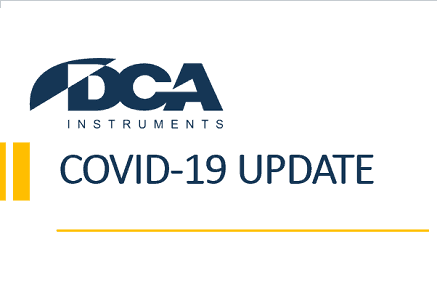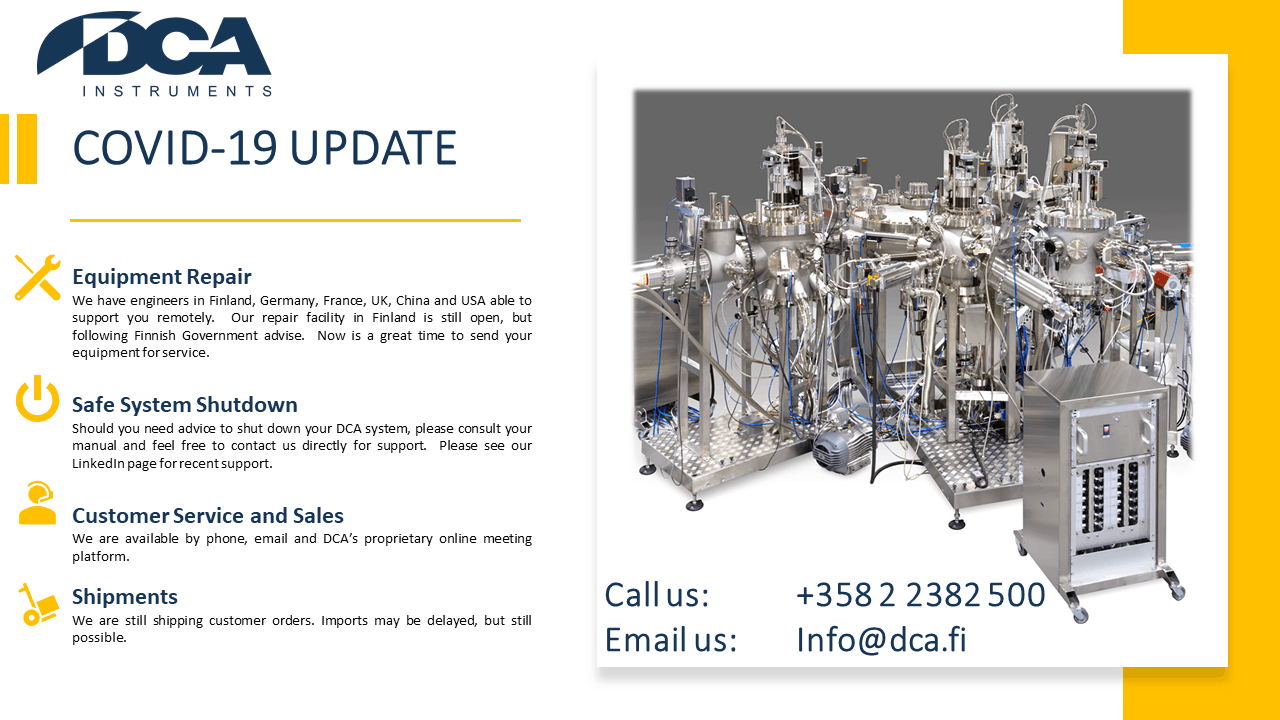How to Safely Hibernate your Vacuum System
Are you looking to hibernate your DCA Thin Film system during a COVID-19 laboratory closure?
Here are some steps to think about alongside your own procedures. Any questions, consult your manual or contact us: info@dca.fi
- Pump down all deposition chambers, transfer chambers and load locks to their base pressure. This will protect activated filaments such as within RHEED source and ion gauges.
- Close transfer gate valves.
- Purge process gas lines, including MFC and Gas manifold, back to the gas bottle. If you can leave the lines under Argon, then do so.
- Water lines should be checked for leaks.
- Materials in your sources, can degrade over long periods. Do you need to secure these? Materials in crackers are a particular concern.
Is there a chance of loss of power?
- Back-up data on PC
Set up Video Calling and have contact details published in laboratory.
These simple considerations alongside your own laboratory checklist should ensure that your system is back to being operational as soon as you are.
We hope that you and your families stay healthy. DCA Instruments: SERVICE & SALES


